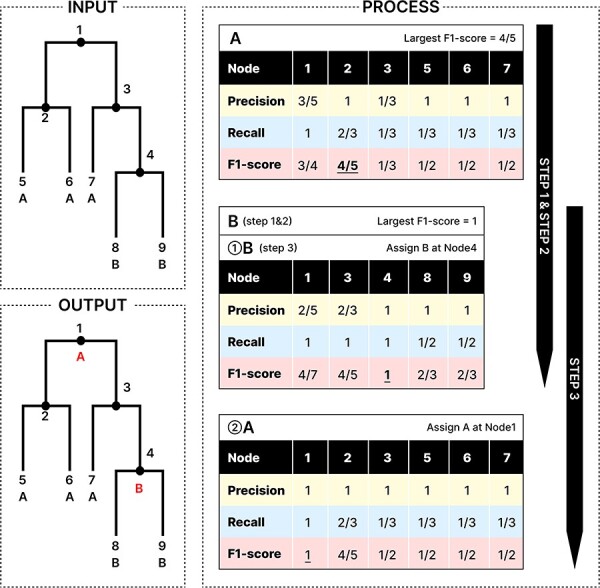Figure 1.

Illustration of the algorithm for ALA. Given a tree with 5 taxa (Nodes 5–9) and 4 internal nodes (Nodes 1–4) where Nodes 5–7 are labeled as lineage A and Nodes 8–9 are labeled as lineage B, the ALA is computed in three steps. Step1: Extract potential annotation nodes for lineages A (Nodes 1–3 and 5–7) and B (Nodes 1, 3–4, and 8–9) [shown in the headers (black background) of the top two tables]. Step2: Determine the order of lineages for ancestral annotation based on the annotation confidence score (the largest F1-score for each lineage, i.e. A = 4/5 and B = 1, marked by underlines in the top two tables). So lineage B is assigned first and then A, as shown by ① and ② in the bottom two tables. Step3: Assign the annotation for B at Node 4 first (middle table), then for A at Node 1. When recalculating F1-scores for potential annotation nodes of lineage A, the taxa at Nodes 8 and 9 are excluded from formulae (1–3) due to Nodes 8 and 9 having been already assigned to the confirmed annotation of Node 4 (bottom table). The F1-score tables for lineage B are the same in Step 2 and Step 3.
